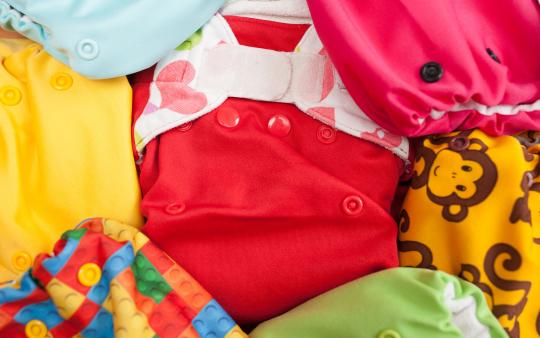So, you finally decided to take the plunge and cloth diaper your bundle of joy? Congratulations and welcome to an ever-growing club! But now you’re swimming in tons of cloth diapering information. Where to go and what to do? Let’s step back and simplify...
Ask the experts
Nothing beats connecting with a local, experienced retailer who can show you the ins and outs and let you see and feel all the different fabrics and options available. Take your baby along too (if they’ve already arrived). A fitting can give you valuable info about their body type and what diaper styles you prefer before you invest. If you don’t have a local retailer, order a few different ones online. Some retailers offer "trial packs".
Beware the ‘one size’ diaper!
Although a diaper might be adjustable to fit a large newborn, you WILL compromise on a trim fit and the diaper might sit up over the umbilical cord at about mid-chest. Most "one size" diapers won’t start fitting a newborn until about 10 lbs (regardless of what the tag says), so plan on purchasing newborn-specific cloth diapers with an umbilical care snap-down feature, or use eco-disposables for the first 8 weeks or so if you choose a ‘one size’ style.
Purchase good quality
Cloth diapers take a lot of wear and tear. One cloth diaper can potentially replace between 200-300 disposables, so look for high-quality diapers from proven manufacturers that back up their products with a warranty. Good diapers also have the benefit of fitting lots of different babies very well so you don’t have to worry as much about leaks from poor fit. Rather than a big box store, purchase from specialty shops which carry a better selection for cloth diapers and can help you compare features between brands if you have questions. Knockoff diapers are generally poorly made and don’t stand the test of time or multiple babies. They usually do not come with a warranty, often infringe on the patents and trademarks of the legitimate brand they copy, and sometimes their materials aren’t properly tested for lead or other chemicals. They also may be manufactured in overseas factories without regard for labour laws or fair wages. If you’re on a tight budget, never fear, you can still cloth diaper very economically with legitimate brands using simple flats or pre-folds and waterproof covers for as little as $200.
Make it easy on yourself
Babies from newborn to six months go through 10-12 diapers per day, so plan on having 24 diapers on-hand so you can comfortably wash every second day. Two large wet bags are helpful so you have one available when the other is in the wash. Have two or three fitted diapers with covers for maximum absorbency at naps and overnight, and don’t skimp on detergent. Simply pop them in the washing machine, run a rinse, then a long hot wash with detergent (without added fabric softener) and dry.
Don’t be intimidated
Cloth diapers can be a bit of an upfront investment. Most spend from $400-$800 for everything they need, including accessories. Many stores offer registries – great gift idea! Spread out your purchases over your pregnancy so it’s not as big of a cash drop. And keep in mind that what you spend on cloth will roughly equal the amount you’d spend on disposables anyway by the time baby is about six months old! After that, you’re diapering for merely the cost of washing and detergent.
Green-it-up tips
To make cloth diapering even more environmentally friendly, try these tips:
Line dry in the summer months
Nothing beats laundry fresh-off-the-line and sunshine will help to bleach out any staining naturally.
Opt for natural fabrics
Organic cotton, bamboo, and hemp diapers with water-resistant wool covers mean zero chemicals next to baby’s skin and they can be repurposed, upcycled, or even composted once your babies are out of diapers. This combo is super breathable and great for babies prone to eczema or allergic skin conditions.
Skip dryer sheets & fabric softener
They are chemically-based and cause cloth diapers to repel urine. Use wool dryer balls — 4-6 in the drum reduce drying time, fluff, separate, and soften clothing and cloth diapers naturally.
Look for local or North American-made diapers
Support your local economy and reduce the carbon footprint of shipping.
Disposables
For times when a disposable is necessary, there are a few eco-disposable options available that have a smaller footprint than traditional disposable diapers. Plan to pay more for the convenience, and environmental and health benefits, but the impact they leave behind will be far less dramatic for generations to come.
Good eco-disposables...
- are made with wood pulp, wheat starch, corn and/or sugarcane for absorbency
- are made from compostable material
- use corn film rather than plastic as the waterproof layer
- are packaged with cardboard or other recyclable material
- are made in North America to reduce shipping distance
Traditional disposables can contain...
- sodium polyacrylate for absorbency
- perfumes
- chlorine
- PVC
- phthalates
- heavy metals
- formaldehyde
- latex
- GMO components
*Originally published February 13, 2017









